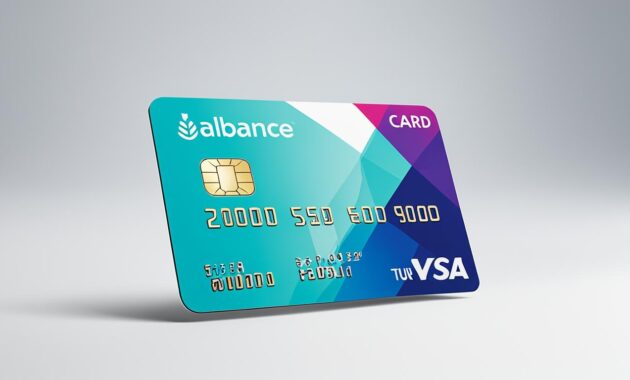A balance transfer is an effective strategy for individuals looking to manage their credit card debt and save money on interest charges. By transferring outstanding debt from one credit card to another with a lower interest rate, consumers can take advantage of promotional periods that offer significantly lower or even 0% APR. This allows for more efficient debt repayment and potential savings in interest charges.
However, it is crucial to carefully consider the terms and conditions of balance transfer offers before making a decision. It is essential to develop a plan to pay off the transferred balance within the introductory period to avoid high-interest charges.
Key Takeaways:
- Balance transfers offer an opportunity to save money on interest charges and manage credit card debt more effectively.
- It is important to carefully consider the terms and conditions before opting for a balance transfer.
- Developing a plan to pay off the transferred balance within the promotional period is crucial to maximize savings.
- Balance transfer offers typically require good to excellent credit scores for eligibility.
- Transferring a balance from a high-interest card to one with a lower interest rate can result in significant interest savings.
Understanding Balance Transfer Credit Cards
A balance transfer credit card is a powerful tool that can help you manage your credit card debt effectively. It allows you to transfer your existing credit card balances to a new card, typically with a much lower interest rate. By taking advantage of a balance transfer credit card, you can save money on interest charges and work towards paying off your debt more efficiently.
One of the key features of a balance transfer credit card is the promotional interest rate it offers. These cards often provide a low or 0% introductory annual percentage rate (APR) for a limited period, usually ranging from six to 18 months or even longer. This promotional rate allows you to make payments towards your transferred balance without incurring additional interest charges, enabling you to save significant amounts of money over time.
Additionally, some balance transfer credit cards come with rewards programs. These programs allow you to earn cash back or points on your everyday spending. By using your balance transfer credit card for your regular expenses, you can earn valuable rewards while also managing your debt.
It’s important to note that while balance transfer credit cards offer enticing benefits, they also come with certain considerations. It’s essential to carefully review the terms and conditions of the card, particularly the length of the promotional period and any associated fees. This will help you determine if the balance transfer credit card is a suitable option for your specific financial needs.
Now, let’s take a deeper look at the key features and benefits of balance transfer credit cards:
| Features | Benefits |
|---|---|
| Low or 0% introductory APR | – Save money on interest charges – Pay off your debt more efficiently |
| Rewards programs | – Earn cash back or points on your everyday spending – Get additional value from your credit card usage |
Factors to Consider When Choosing a Balance Transfer Card
When considering a balance transfer card, it’s important to take into account several key factors that can greatly impact your financial decisions. By carefully evaluating transfer fees, credit score requirements, credit limits, and interest rates, you can make an informed choice that aligns with your financial goals.
Transfer Fees
One crucial aspect to consider is the transfer fee associated with the balance transfer card. These fees typically range from 3% to 5% of the transfer amount. It’s important to calculate and compare these fees to determine the overall cost of transferring your balance.
Credit Score
Most balance transfer cards require a good to excellent credit score for approval. Before applying, it’s essential to assess your creditworthiness to ensure you meet the necessary requirements. A higher credit score may also help you qualify for better terms and lower interest rates.
Credit Limit
Another important factor is the credit limit offered by the new card. Ensure that the credit limit is sufficient to accommodate the transfer amount without maxing out the card. A lower credit limit may restrict your ability to transfer a significant portion of your debt.
Interest Rates
Comparing interest rates is critical when choosing a balance transfer card. The goal is to find an interest rate lower than what you currently have on your existing cards. By securing a lower rate, you can save money on interest charges and accelerate your debt repayment.
Considering these factors will help you make an informed decision when selecting a balance transfer card. By evaluating transfer fees, credit score requirements, credit limits, and interest rates, you can find a card that aligns with your financial needs and helps you achieve your debt management goals.
| Factors to Consider | Range |
|---|---|
| Transfer Fees | 3% – 5% of the transfer amount |
| Credit Score | Good to excellent credit required |
| Credit Limit | Sufficient to accommodate transfer amount |
| Interest Rates | Lower than rates on existing cards |
Benefits and Potential Pitfalls of Balance Transfers

Balance transfers offer numerous benefits that can help individuals save money on interest and manage their credit card debt more efficiently. By transferring high-interest credit card debt to a card with a lower interest rate, cardholders can take advantage of the following:
- Interest Savings: By reducing the interest rate on their debt, individuals can save a significant amount of money over time. This allows them to pay off their balance faster and allocate more funds towards reducing the principal amount owed.
- Promotional Periods: Balance transfer offers often include a promotional period with a lower or even 0% APR. This allows cardholders to pay off their debt without accruing additional interest charges during the introductory period.
However, it’s crucial to be aware of potential pitfalls associated with balance transfers. Violating the cardholder agreement or not fully understanding the terms and conditions can result in the following:
- Penalty Rates: Failure to make timely payments or exceeding the credit limit can trigger penalty rates as high as 29.99%. This can significantly increase the cost of borrowing and hinder efforts to pay off the debt.
- Loss of Promotional APR: Failure to adhere to the cardholder agreement can also lead to the loss of the promotional APR, causing the interest rate to revert to the regular rate, which may be higher than the cardholder anticipated.
It is essential for cardholders to thoroughly read the cardholder agreement and understand the terms and conditions of the balance transfer offer. By making timely payments and sticking to the agreement, individuals can fully benefit from the promotional period and reduce their debt efficiently.
“Balance transfers offer the opportunity to save on interest charges, but it’s crucial to understand the cardholder agreement to avoid penalty rates and loss of promotional APR.”
| Benefits of Balance Transfers | Potential Pitfalls |
|---|---|
| Interest savings | Penalty rates |
| Promotional periods | Loss of promotional APR |
What to Look for in a Balance Transfer Card

When it comes to selecting a balance transfer card, there are key factors you should consider to make the most of your debt management strategy. By focusing on crucial aspects such as the 0% APR period, regular interest rate, and grace period, you can ensure that your balance transfer card aligns with your financial goals.
The 0% APR period is a critical element to look for in a balance transfer card. This introductory period provides an interest-free timeframe during which you can make payments towards your debt without incurring any additional charges. The longer this period, the more time you have to chip away at your balance and make significant progress towards becoming debt-free.
Regular interest rates come into play once the promotional period ends. It’s essential to choose a balance transfer card that offers a regular interest rate lower than the rates on your existing cards. This way, when the promotional period expires, you can continue managing your debt at a reduced interest rate, minimizing the burden of high interest charges.
The grace period is another factor to keep in mind. This is the time between the end of the billing cycle and the due date of your bill. Understanding the grace period is crucial when carrying a balance from a promotional balance transfer. Make sure you grasp how the grace period works and how it may be affected by carrying a balance, as it could impact interest charges and the timing of your payments.
In summary, a balance transfer card with a long 0% APR period, a competitive regular interest rate, and an understanding of the grace period can be a valuable tool for managing your credit card debt. By carefully evaluating these factors, you can select a card that aligns with your financial needs and helps you make significant strides towards debt relief.
Comparison Table: Balance Transfer Card Options
| Card Name | 0% APR Period | Regular Interest Rate | Grace Period |
|---|---|---|---|
| Card A | 15 months | 12.99% | 25 days |
| Card B | 18 months | 11.99% | 21 days |
| Card C | 12 months | 14.99% | 30 days |
| Card D | 24 months | 10.99% | 28 days |
Note: This is a comparison table and not a recommendation. Please review the terms and conditions of each card and evaluate them based on your specific financial situation.
How to Do a Credit Card Balance Transfer

Completing a credit card balance transfer can be done through various methods, providing you with flexibility and convenience. Whether you choose to use balance-transfer checks or complete the transfer online, it’s essential to understand the process and its implications. Additionally, being aware of the grace period will help you make informed decisions and avoid unnecessary interest charges.
Transfer Options
When it comes to transferring your credit card balance, you have a few options to choose from:
- Balance-Transfer Checks: Some credit card issuers provide balance-transfer checks that you can use to pay off the balance on your existing card. These checks can be made out to either the card company or yourself, offering flexibility in how the payment is processed.
- Online Transfers: Many credit card issuers allow you to complete the transfer online through their website or mobile app. Simply provide the necessary account information to the new card issuer, and they will handle the transfer process.
- Phone Transfers: Alternatively, you can complete the transfer over the phone by calling the customer service number provided by the new card issuer. A representative will assist you in transferring the balance from your existing card.
Regardless of the method you choose, make sure to have the necessary details and account information readily available to ensure a smooth and efficient transfer process.
Grace Period Considerations
It’s important to understand that carrying a balance from a promotional balance transfer may affect the grace period offered by your new credit card. The grace period refers to the time between the end of the billing cycle and the due date of your bill. During this period, you can make interest-free purchases if you pay the closing balance in full by the due date.
However, carrying a balance from a promotional transfer will usually eliminate the grace period for new purchases. This means that interest will start accruing on new purchases immediately. To avoid interest charges, it’s crucial to make timely payments that cover both the transferred balance and any new charges made on the card.
By understanding the impact of a balance transfer on the grace period, you can effectively navigate your credit card usage and manage your overall debt.
Implementing a credit card balance transfer can be a strategic move in managing your finances and reducing interest charges. Choosing the right transfer method and staying vigilant about the grace period will help you make the most of this opportunity and achieve your financial goals.
Pros and Cons of Balance Transfer Cards

Balance transfer cards offer both advantages and disadvantages when it comes to managing credit card debt. Let’s explore the pros and cons:
Pros:
- Credit Impact: When used wisely, balance transfer cards can have a positive impact on your credit score. Making on-time payments and reducing your debt can demonstrate responsible credit management, which can improve your creditworthiness over time.
- Interest Savings: One of the primary benefits of balance transfer cards is the opportunity to save money on interest charges. By taking advantage of a low or 0% introductory APR, you can pay off your debt faster and avoid accruing additional interest.
Cons:
- Transfer Fees: It’s important to carefully consider the transfer fees associated with balance transfer cards. These fees typically range from 3% to 5% of the transfer amount. While the potential interest savings may outweigh the fees, it’s essential to calculate the overall cost before making a decision.
In summary, balance transfer cards can be a valuable tool for managing credit card debt and saving money on interest charges. However, it’s crucial to weigh the potential benefits against the transfer fees to determine if a balance transfer is the right choice for your financial situation.
Where to Find Balance Transfer Credit Card Offers

Looking for the best balance transfer credit card offers? You’re in the right place! Here are some reliable sources to help you find the perfect card:
Credit Card Issuer Websites
Start your search by visiting the websites of major credit card issuers. They often feature exclusive balance transfer offers that are tailored to their existing customers. By exploring these websites, you can find competitive interest rates, extended promotional periods, and other perks that can help you save money.
Personal Finance Websites
Personal finance websites are another valuable resource for finding balance transfer credit card offers. These websites provide comprehensive credit card reviews and recommendations, helping you make an informed decision. They often feature lists of the top balance transfer cards, highlighting the key features and benefits of each option.
Credit Card Comparison Websites
To compare different balance transfer offers side by side, credit card comparison websites are your go-to source. These platforms allow you to filter and compare cards based on various criteria, such as interest rates, promotional periods, and annual fees. However, keep in mind that some comparison websites receive referral fees from credit card companies, which may influence the information they provide. So, it’s always a good idea to cross-reference the data with the official credit card issuer’s website.
By exploring these sources, you’ll gain access to a wide range of balance transfer credit card offers, making it easier to find the card that best fits your needs and financial goals.
| Source | Pros | Cons |
|---|---|---|
| Credit Card Issuer Websites | – Exclusive offers for existing customers – Tailored perks and benefits |
– Limited to specific credit card issuers – May not have the best overall options |
| Personal Finance Websites | – Comprehensive reviews and recommendations – Highlight top balance transfer cards |
– Subjective opinions – Limited to available information |
| Credit Card Comparison Websites | – Efficient side-by-side comparisons – Easy to filter and find suitable options |
– Potential biases due to referral fees – Information may not always be up-to-date |
Factors to Consider Before Applying for a Balance Transfer Card

Before applying for a balance transfer card, it’s important to assess several factors to make an informed decision. Taking the time to consider these factors will help you choose the right balance transfer card that aligns with your financial goals and circumstances.
Credit Score
Your credit score plays a significant role in the approval process for balance transfer cards. Most issuers require good to excellent credit scores for approval. Before applying, check your credit score to verify that you meet the minimum requirements. A higher credit score will increase your chances of being approved for the card.
Balance Transfer Limits
Every balance transfer card has limits on the amount you can transfer. These limits can vary among different issuers. Be sure to check the balance transfer limits of the card you are considering to ensure it can accommodate the amount you wish to transfer. Maxing out the transfer limit could result in your application being declined or only a partial balance transfer being approved.
Bankruptcy Filing and Payment History
Past financial difficulties, such as a history of late payments or a bankruptcy filing, can impact your eligibility for a balance transfer card. Creditors may view these factors as a higher risk, making it more challenging to obtain approval. It’s essential to consider these aspects and evaluate whether they may affect your chances of being approved for a balance transfer.
Interest Rate Reduction
If you have an existing credit card with a high-interest rate, it may be worthwhile to reach out to your card issuer before applying for a balance transfer card. You could negotiate an interest rate reduction on your current card, allowing you to enjoy similar benefits to a balance transfer without incurring transfer fees. This option can be an effective alternative if you are unable to secure a balance transfer card or want to avoid the hassle of transferring balances.
By considering these factors, you can make an informed decision when applying for a balance transfer card that aligns with your financial needs and goals.
| Factors to Consider | Importance |
|---|---|
| Credit Score | High |
| Balance Transfer Limits | Medium |
| Bankruptcy Filing and Payment History | Medium |
| Interest Rate Reduction | Low |
Paying Off Debt with a Balance Transfer Card

The key to using a balance transfer card effectively is to have a plan in place to pay off your debt. While the introductory period may offer 0% APR, it’s crucial to make monthly payments that exceed the minimum payment to make significant progress in paying off your debt.
By carefully budgeting and allocating funds towards paying off your transferred balance, you can take full advantage of the interest-free period. It’s important to ensure that the balance is fully paid off before the end of the promotional period to avoid incurring interest charges.
Here are some strategies to help you pay off your debt with a balance transfer card:
- Create a repayment plan: Assess your current financial situation and determine how much you can afford to pay towards your debt each month. Set a specific goal to pay off your balance within the promotional period.
- Allocate extra funds: Look for ways to free up additional money in your budget to put towards your debt repayment. Cut unnecessary expenses or increase your income to accelerate your progress.
- Avoid new purchases: During the interest-free period, try to refrain from making new purchases on the balance transfer card. Focus solely on paying off the transferred balance to minimize interest charges.
- Monitor your progress: Regularly track your debt repayment progress to stay motivated and make adjustments if necessary. Celebrate milestones along the way to keep yourself motivated.
- Consider balance transfer fees: While balance transfer cards can save you money on interest charges, they often come with transfer fees. Factor these fees into your repayment plan to ensure they don’t hinder your progress.
By following these strategies and staying committed to your repayment plan, you can effectively pay off your debt using a balance transfer card and achieve financial freedom.
Expert Tip
“To maximize the benefits of a balance transfer card, aim to pay more than the minimum monthly payment. By doing so, you’ll pay off your debt faster and avoid accumulating interest charges. It’s important to stay disciplined and dedicated to your repayment plan.”
Also Read : Exploring Types Of Credit Card Options Available
Conclusion
Balance transfers can be a powerful tool for managing credit card debt and achieving significant interest savings. By leveraging the opportunity to transfer high-interest balances to a card with a lower or 0% introductory APR, individuals can make significant progress in paying off their debt.
When considering a balance transfer, it is crucial to carefully evaluate the terms and conditions of the offer, including transfer fees, promotional periods, and regular interest rates. By taking the time to understand these factors, individuals can make an informed decision and select a balance transfer card that best suits their needs.
It is important to develop a solid plan to pay off the transferred balance within the introductory period. By making regular monthly payments that exceed the minimum requirement, individuals can take full advantage of the interest-free period and make substantial progress in paying off their debt.
Overall, balance transfers can be an effective strategy for credit card debt management, providing individuals with an opportunity to save money on interest charges and work towards a debt-free future.
FAQs
Q: How does a balance transfer work?
A: A balance transfer involves moving your credit card debt from one card to another, typically to take advantage of a lower interest rate or promotional period.
Q: What is a balance transfer fee?
A: A balance transfer fee is a charge imposed by credit card issuers when you transfer a balance from one card to another. It is usually a percentage of the amount being transferred.
Q: How to find the best balance transfer credit cards?
A: Look for cards that offer a low APR, introductory 0% APR offer on balance transfers, and low or no balance transfer fees. These are typically considered the best options for balance transfers.
Q: What is intro APR?
A: An intro APR is an introductory annual percentage rate offered by credit card issuers, typically providing a promotional period with a low or 0% APR on balance transfers.
Q: How can I save money on interest with a balance transfer?
A: By transferring high-interest credit card debt to a card with a lower APR or a 0% introductory APR on balance transfers, you can save money on interest payments.
Q: Can I transfer balances between any credit cards?
A: Not all credit cards allow balance transfers. You need to check with the card issuer if they offer the option to transfer balances.
Q: How do I complete a balance transfer?
A: To complete a balance transfer, you typically need to provide the account details of the card with the debt and the amount you wish to transfer to the new card issuer.
Source Links
- https://www.investopedia.com/credit-cards/balance-transfer-credit-card/
- https://www.fool.com/the-ascent/credit-cards/articles/heres-how-to-win-the-balance-transfer-game/
- https://www.sccu.com/articles/personal-finance/how-do-credit-card-balance-transfers-help-slash-debt